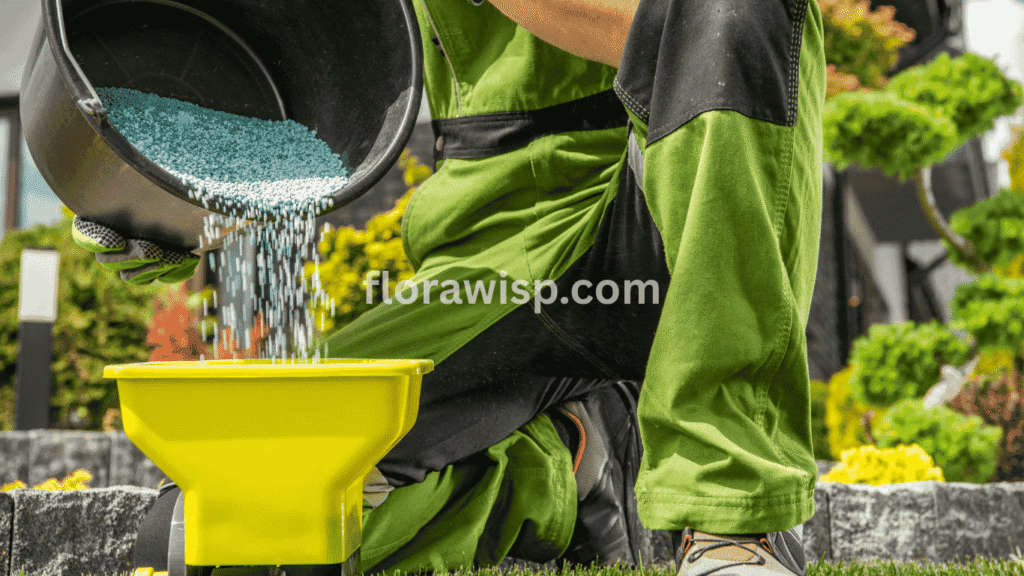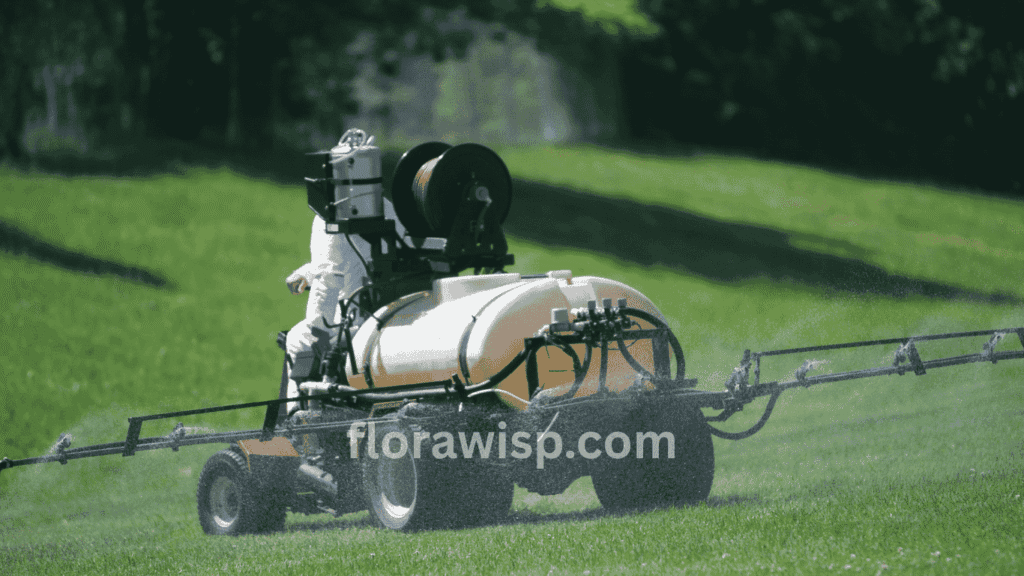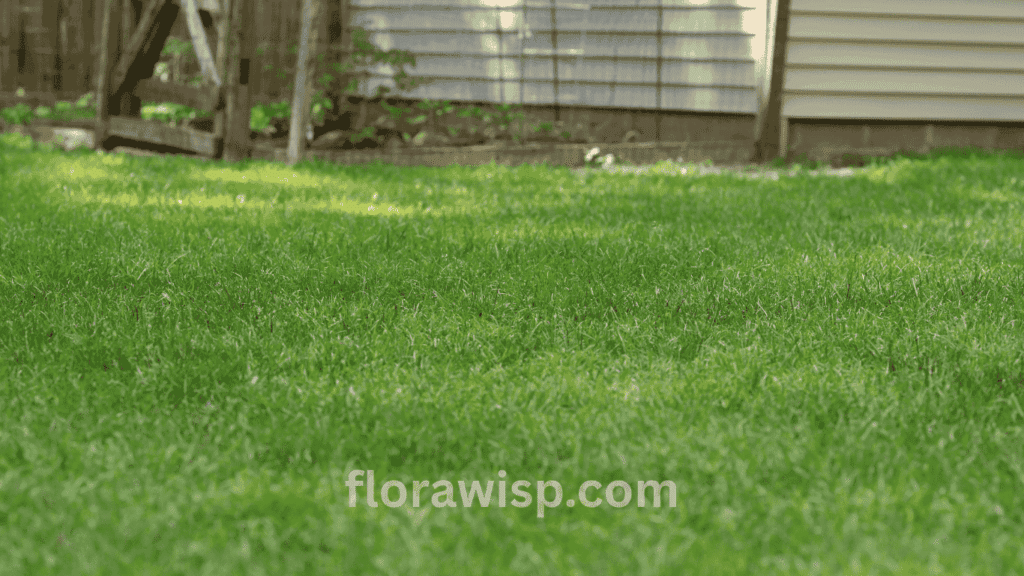When to plant Bermuda grass North Carolina? I’ve grown it for years across both Carolinas, and I’ve learned that healthy growth starts with the right prep not just the planting date. As a lawn care specialist working in North and South Carolina, I’ve seen how Bermuda grass in North Carolina thrives when soil is properly prepared, not rushed. It’s a sun-loving, drought-tolerant grass that rewards you with thick, green coverage if planted at the right time and in the right way.
In This Article
Bermuda grass is especially suited for homeowners who want a resilient lawn that looks great without needing daily attention. Thanks to the Carolinas’ long growing season, this grass enters active growth early and holds color longer than cool-season varieties. It grows best with full sun exposure at least 6 to 8 hours a day and appreciates well-drained soil. From golf courses to home lawns, its aggressive spread and thick mat make it a top choice for both curb appeal and functionality. If you’re comparing regional performance, check out how Bermuda grass in Georgia thrives under similar conditions, or explore Bermuda grass in Texas performs to achieve the best results in your own yard.
Through years of testing different maintenance techniques in both states, I’ve built proven schedules and strategies that help average homeowners get professional results. Whether you’re in coastal Charleston or in the Piedmont region of North Carolina, this guide covers everything from planting to dormancy, based on local conditions and my real-world experience.
When to Plant Bermuda Grass in North Carolina & South Carolina

North Carolina
Knowing when to plant Bermuda grass North Carolina plays a critical role in how well your lawn thrives. After years of trial and error, I’ve found that late April to early June is the sweet spot. Soil temperatures need to consistently stay above 65°F for Bermuda seed or sod to take root. Starting too early when night temps are still low often results in poor germination and patchy growth. For homeowners across the Piedmont and Sandhills regions, following the right timing and temperature guidelines gives Bermuda Grass North Carolina lawns the best start possible.
If you’re working in the Piedmont or Sandhills region, early May has consistently delivered the best establishment rates in my projects. Avoid planting after mid-July, especially in areas with heavy clay, as late planting risks heat stress without allowing the roots to properly develop.
Use a soil thermometer, not just air temperature apps. Once the soil hits 65°F in the top 1-2 inches and the forecast shows consistent warmth, you’re good to go. Prepping the soil with light tilling and a starter fertilizer improves root anchoring. For new lawns, I always recommend a light mulch covering to retain moisture during the critical germination window.
South Carolina
In South Carolina, the planting window starts earlier. The best time to plant grass seed in South Carolina is mid-April to late May. Coastal regions like Myrtle Beach often see soil temps hit the 65°F threshold by mid-April. In the Upstate, like Greenville, aim for late April to early May.
One common mistake I see is ignoring regional microclimates. While coastal areas warm early, higher elevations take longer. I once helped a homeowner in Columbia establish sod mid-April, while a client in Spartanburg had to wait until May 10th.
Keep in mind that South Carolina’s spring rain pattern can both help and hinder your efforts. Ensure the area drains well to avoid fungal issues. Water lightly and frequently until establishment, and avoid foot traffic for 3-4 weeks.
Bermuda Grass Calendar South Carolina
A successful Bermuda lawn needs a seasonal care routine tailored to the South Carolina climate. Here’s the month-by-month breakdown I use with clients across the state:
January – February
- Grass is dormant
- Sharpen mower blades, plan soil test
- Spot-spray winter weeds with appropriate herbicide
March – April
- Apply pre-emergent herbicides
- Start mowing low to remove dead growth (scalping)
- Apply balanced fertilizer once soil reaches 65°F
May – June
- Fertilize every 6 weeks
- Mow every 5-7 days (height: 1-1.5″)
- Monitor for grubs and treat if necessary
July – August
- Water deeply but infrequently (1″/week)
- Spot-treat summer weeds
- Avoid nitrogen fertilizers during high heat
September – October
- Reduce mowing frequency
- Apply final fertilizer early September
- Overseed with rye (if desired for winter green)
November – December
- Grass enters dormancy
- Apply potassium-rich fertilizer
- Avoid mowing; remove leaves and debris
This Bermuda grass calendar South Carolina approach keeps turf healthy and minimizes weed pressure all year. I also recommend keeping a printed or digital version handy for easy monthly reminders.
Bermuda Grass Fertilizer Schedule for North Carolina Lawns

Fertilizing Bermuda grass North Carolina lawns properly depends on understanding both climate and soil composition. NC lawns often sit on sandy or clay-heavy soils, and each demands tailored nutrition.
Spring (Mid-April to May)
- Apply a balanced 16-4-8 or 21-7-14 fertilizer when soil temps hit 65°F
- Use slow-release for steady feeding
Summer (June – August)
- Feed every 6 weeks with nitrogen-rich mix (e.g., 28-3-10)
- Avoid applying during drought or when temps exceed 90°F
- Water immediately after fertilizing
Fall (September)
- Use potassium-heavy mix like 10-0-30 to strengthen roots
- Avoid high nitrogen; it can encourage disease and late growth
I once helped a Raleigh homeowner struggling with a brown patch due to late-summer over-fertilizing. After switching to a balanced schedule and using soil amendments like lime and organic compost, the lawn rebounded in just one season.
Mistakes to avoid:
- Don’t “eye-ball” your fertilizer. Use a spreader.
- Always water in.
- Don’t fertilize dormant grass in late fall or early spring.
How to Care for Bermuda Grass in South Carolina

Bermuda grass South Carolina lawns need season-specific care to stay healthy in the heat and humidity. I follow this proven care routine with coastal and inland clients alike.
Mowing
- Keep mowing height at 1-1.5 inches
- Mow every 5-7 days in summer
- Sharpen blades to avoid tearing
Watering
- Water 1 inch/week, early mornings only
- Adjust for rainfall; overwatering causes disease
- Watch for signs of drought stress: folded leaves, bluish tint
Disease & Weed Control
- Pre-emergents in March and September
- Post-emergent weed control in summer (use label-safe products)
- Brown patch and dollar spot common in humid months—use fungicides as needed
For example, I treated a Charleston lawn that suffered from leaf spot due to poor drainage. After adjusting irrigation times, improving soil with organic matter, and applying a fungicide, the recovery was quick and lasting.
Don’t forget to aerate annually and dethatch every 2-3 years. Regular care makes a massive difference.
Dormancy and Seasonal Transitions in Bermuda Grass (NC Focus)

Bermuda grass North Carolina goes dormant once temperatures dip below 55°F consistently, usually around mid-November. During this time, the lawn turns brown and stops growing. This is normal and expected.
If you’re wondering when Bermuda grass goes dormant in North Carolina, it’s generally mid-November through mid-March. I advise clients not to panic when the color fades. It’s just the grass conserving energy.
Signs of Dormancy
- Grass stops growing
- Green fades to straw brown
- Root systems remain alive and healthy beneath the soil
Maintenance Tips
- Avoid fertilizing or overseeding with Bermuda during dormancy
- Consider overseeding with ryegrass for green winter color
- Continue weed control, especially for winter weeds
Over the years, I’ve overseeded many dormant lawns in Charlotte with annual ryegrass to maintain visual appeal. This practice doesn’t harm Bermuda if timed right and mowed low before seeding.
Aerating Bermuda Grass

Aeration is a vital part of Bermuda lawn care, especially in the clay-heavy soils of North Carolina. The best time to aerate Bermuda grass North Carolina is late spring through early summer, just as the grass begins vigorous growth.
Why Aerate?
- Loosens compacted soil
- Improves water and nutrient absorption
- Encourages deeper root development
How to Aerate
- Use a core aerator for best results
- Water lawn 24 hours before to soften soil
- Aerate in two passes: north-south and east-west
I once worked with a Greensboro client whose lawn struggled despite proper fertilization. After core aerating and applying compost topdressing, turf health improved dramatically in just six weeks.
Avoid aerating in early spring or fall when the lawn is dormant. Doing so can cause unnecessary stress.
Can You Spray Roundup on Dormant Bermuda Grass?

Yes, you can spray Roundup on dormant Bermuda grass, but it must be done with caution. Glyphosate, the active ingredient in Roundup, only targets green tissue. During winter dormancy, Bermuda is brown and inactive, so Roundup won’t harm it, as long as it’s fully dormant.
I advise spraying only on warm winter days (above 50°F) when no green shoots are visible. If green Bermuda has already started emerging, Roundup will damage it. I typically apply it in January or early February to target winter weeds like Poa annua without harming turf.
For organic-minded clients, alternatives like vinegar-based herbicides or manual weeding work but require more effort.
FAQs
Q. How do you care for Bermuda grass in North Carolina?
In North Carolina, Bermuda grass thrives with full sun, weekly deep watering, and monthly fertilization during the growing season. I recommend mowing at 1–1.5 inches and using a pre-emergent herbicide in early spring. In my Charlotte lawn, switching to a slow-release nitrogen blend in June made a visible difference in thickness and color.
Q. What’s the best way to grow Bermuda grass in North Carolina?
Start with well-drained, sandy-loam soil and plant Bermuda grass when soil temps reach 65°F usually in late April. I’ve seen great results using Tifway 419 seed in the Piedmont region. Keep the top 1/4 inch moist for 2 weeks and mow once it hits 2 inches. Early care sets the foundation for dense, durable turf all summer.
Q. What’s the best time to plant Bermuda grass in North Carolina?
The best time to plant Bermuda grass in North Carolina is late April to early June. Soil temperatures should be consistently above 65°F for successful germination. Planting too early leads to poor establishment, especially in areas like Raleigh or Greensboro. Use a soil thermometer and prepare the site by light tilling, pre-watering, and applying starter fertilizer for optimal results. One year, a client in Durham saw near 100% coverage by mid-summer after following this exact timing and prep routine.
Q. How to care for Bermuda grass in South Carolina?
To care for Bermuda grass in South Carolina, mow regularly (1-1.5″), water deeply once a week, and use seasonal fertilizers. Apply pre-emergent weed control in March and September. During hot, humid months, monitor for fungal diseases and treat promptly. Aerate annually and dethatch every few years for healthy turf that thrives in the southern climate. A Mount Pleasant homeowner I worked with reduced brown patches dramatically by adjusting irrigation and mowing frequency during peak humidity.
Q. When should I aerate Bermuda grass in NC?
The ideal time to aerate Bermuda grass in North Carolina is from late May to early July. Aerating during active growth improves soil airflow and promotes root strength. Avoid aerating in early spring or fall. For compacted clay soils, aeration is especially helpful in enhancing fertilizer and water penetration.
Q. Is it safe to apply Roundup to dormant Bermuda grass?
Yes, it is safe to apply Roundup to dormant Bermuda grass, but only if the turf is fully brown and inactive. The herbicide targets green plant tissue, so spraying too late in winter or early spring can harm emerging blades. Apply on warm winter days before spring green-up to eliminate winter weeds safely. I routinely apply it to dormant lawns in January across NC without issue as long as no green shoots have appeared.
Conclusion
Bermuda grass North Carolina homeowners and those in South Carolina can enjoy a thick, green, low-maintenance lawn by following region-specific practices. Timing your planting, fertilizing wisely, and managing dormancy all contribute to year-round success. Whether you’re battling clay soils in NC or heavy rainfall in SC, adapting your care strategy based on local conditions is the key. Use this guide as your blueprint for a vibrant, thriving lawn across the Carolinas.
Sources
- Bermudagrass Lawns – Clemson University Extension
- TurfFiles – NC State Extension: Bermudagrass
- NTEP Trials – National Turfgrass Evaluation Program
Gardener, M.Sc. Horticulture
Elara Bennet is a gardening writer from Austin, TX, passionate about sustainable lawns and blooms. Read full bio →








